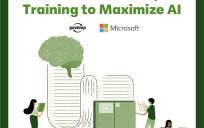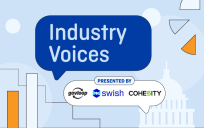This post was co-authored with Caroline Schauder and Madison Suh
With the news that the Ryan-Murray bill is proposing each agency to name a chief data officer and chief evaluation officer, we wanted to share four key lessons based on conversations with chief data officers across varying levels of government. The Foundations for Evidence-Based Policymaking Act of 2017 includes the goals to “establish a more secure, transparent, and efficient data system that will help federal agencies better assess the effectiveness of their programs.” This presents an opportunity for taking stock of what works and way towards delivering more data enhanced governance.
The increased availability and prevalence of data in government agencies opens a new discussion of how agencies can use this information to better support their priorities and policies, and to improve public outcomes. However, applying data for enhanced decision making also poses many challenges across sectors. Here is an exploration of the different challenges that agencies face today, including excessive information, merging new and old technologies, lack of trust, and a gap in data knowledge.
- Outcome Driven:
Outcome-driven data is a necessity. Government agencies leverage data to measure what matters, but there is often a disconnect between data collection and purpose. The value of data lies in the information that it yields and the impact that it catalyzes. The emphasis should be on maintaining a strategic vision around data collection, use, and dissemination, and to reflect this mission in the decision-making, policy formation, and data collection processes. Data pollution exacerbates this challenge by creating excessive amounts of data which may not necessarily contribute to the overall mission. Effectively filtering data is paramount for agencies to achieve desired outcomes.
- Merging New and Old:
The rapid and constant invention of new technologies tasks government agencies with the challenge of effectively merging the “new” and the “old.” New technologies present large costs, which agencies may not be able to finance. This requires agencies to be creative in their processes, for example learning to use existing technologies to achieve new solutions. Instead of using old infrastructure as an excuse, there is an opportunity for innovative applications. Conversely, at times agencies invest in new technology, but use them in an outdated way. This presents a challenge to government agencies, as it is difficult to retrain and reorient an entire staff to new processes. The combination of technologies and processes requires innovation and adaptability requiring leadership, skills training, and creative applications to interweave “old” and “new.”
- Data Silos and Data Trust:
The open data movement has made substantial efforts to increase data variety and public access to large datasets in the past few years, but the full potential of this data has not been reached and has instead created isolated pockets of data. Non-interoperable systems create decentralized standards, methods, and descriptions of data, and data silos emerge in the absence of a common language to describe, interpret, and utilize data collaboratively within organizations and across sectors. Individuals face harsh penalties for sharing data incorrectly and organizations lack strong data trust agreements, removing any incentives for effective collaboration to take place.
Private-public data partnerships are challenging to maintain while ensuring data in the interests of national security and individual user privacy, which presents a tradeoff between privacy and the complete data narrative. In addition, transactional legal costs are costly and time-intensive. Proper data stewardship and governance policies could keep people accountable in ensuring the security of data, building trust through data-sharing and collaboration, embedding data into the infrastructure of organizations, improving data literacy at all levels, and enabling administrators to collaborate freely.
- Education + Marketing:
Data is further bifurcated with varying capacity to understand data, in the gap between those who understand data and those who do not. The increasing prevalence of data in government agencies necessitates improved data literacy amongst upper level managers. In order to take advantage of data and its uses, executives must have a knowledge of the logistics and possibilities of data. This emphasizes the roles of Chief Data Officers (CDOs) as data storytellers. The CDO must be able to effectively advocate for and market the use of data in order for it to be prioritized and gain executive support. In this capacity, the CDO serves to help agencies turn data into something meaningful and help people understand how data can contribute to their mission. In addition to marketing, providing employees with a basic education of data and its uses, would help to contextualize the mission of data.





Leave a Reply
You must be logged in to post a comment.